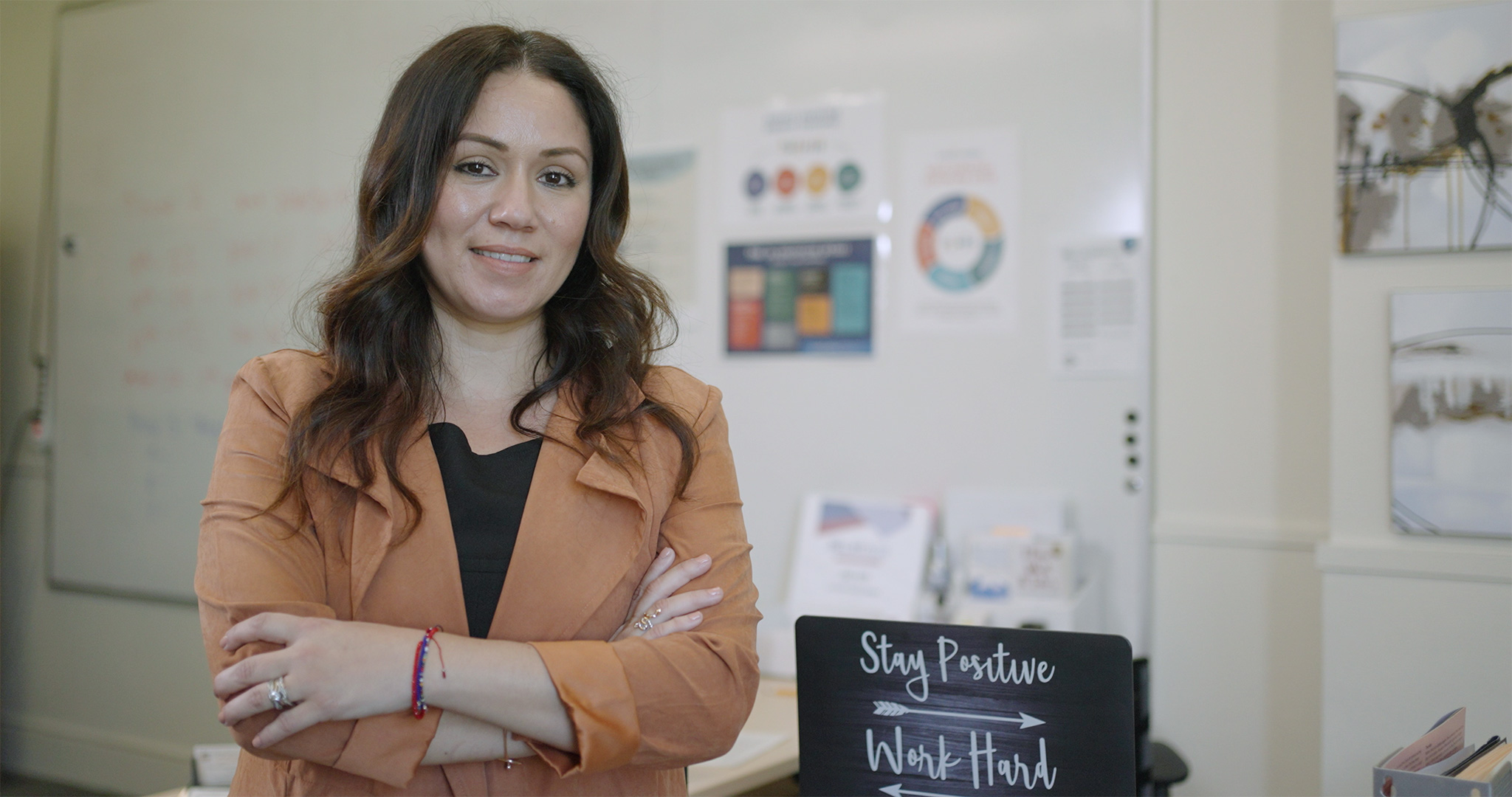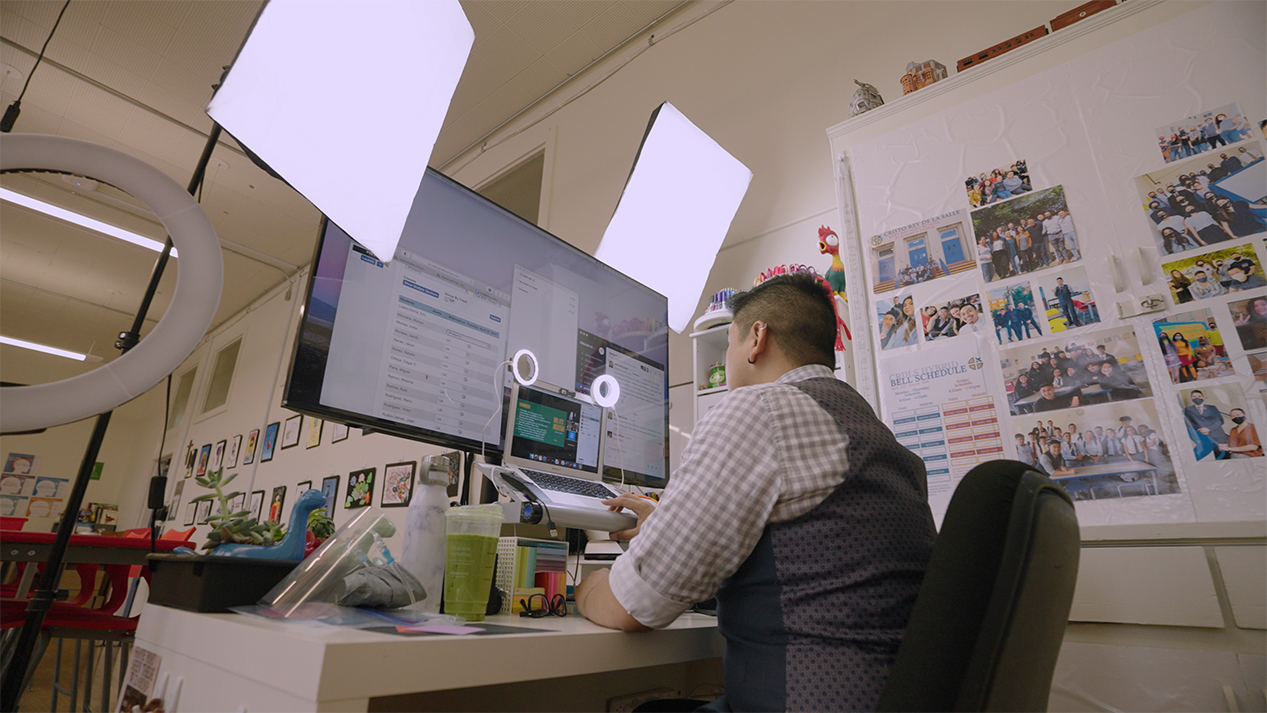May 6, 2021 · 7 min read
Cristo Rey De La Salle High School Is Committed to Putting Community First As It Reopens

Students and educators in Oakland, California, are preparing to return to in-person learning after a year of virtual instruction. For Ana Hernandez, principal at Cristo Rey De La Salle (CRDLS) East Bay High School, the prospect feels momentous.
“I’m super excited,” she says. “The energy in the building with just the faculty back is so good that I can’t imagine once we have all the students back on campus, what it’s going to feel like.”
CRDLS is taking a phased approach to onboarding its 200-plus student body, with plans to fully reopen on May 10. Ana says that despite the challenges of organizing a safe transition to in-person learning, the entire school community is ready and working together intentionally and creatively to make the new year a success.
Supporting Its Students
Launched in 2018 in Oakland’s Fruitvale neighborhood, CRDLS is part of a network of Cristo Rey schools across the country. Their unique learning model prioritizes the social and emotional well-being of its students. They have a full-time counselor versed in social and emotional support on staff and offer a robust mentorship program that pairs each student with a mentor for the entire four years of school. It also includes rigorous college preparatory academics, four years of professional work experience through its Corporate Work Study Program, and support for students through college.
Since its founding, CRDLS has used Summit Learning, a comprehensive, research–based approach to education designed to drive student engagement, meaningful learning, and strong student–teacher relationships.
With Summit, students focus on developing a strong grasp of class material and effective application of key skills, such as critical analysis and communication. Teachers tailor their teaching to every student’s specific needs through thoughtful mentoring sessions and group workshops. Teachers guide students to build habits — like curiosity, resilience, and a sense of purpose — that help them thrive throughout their lives. “We want to walk the journey with our students,” Ana says. “That’s why we went with Summit Learning.” With strong foundational programs in place, the school has been quick to adapt student learning through the challenges of the past year.
“Faculty at Cristo Rey have been really good at pivoting,” says Michael Cody, an AP History teacher at CRDLS. “We shut down the school at the onset of the pandemic and I think two days later we were on virtual learning.”
The mentorship program and extracurricular clubs went virtual. The school organized small pods so students could continue playing sports. Parents were kept up-to-date and connected at monthly virtual workshops and several town halls where they had the opportunity to speak with school leadership and provide feedback.
“We’ve offered food. We’ve provided detergent, shampoo, and gift cards during holidays,” says Ana. “Any needs that our families might share with us, we’ve tried to support them in that way.”
Their approach, not just on academics but on a student’s mental well-being and physical health, is making an impact. Ana says students have demonstrated growth four times the national average in English language arts, and twice the national average in math. During the pandemic, average weekly attendance is holding steady at 98% and overall student retention is at 97%.
Keeping the students at the heart of it all, regardless of obstacles, is what Ana says is key: “We are a community that is willing to do what needs to get done to support our students. At the core we always go back to, is this in the best interest of our students?”
Supporting Its Educators

As reopening approaches, Ana emphasizes it will be critical to also keep the safety and well-being of CRDLS educators at the forefront.
“My teachers hear me saying this all the time: When they feel taken care of, when they feel supported, when they feel the love, they can show up in the best way possible to support our students,” she says.
Michael says that starts by providing resources educators need to successfully transition back to in-person learning.
“When you have someone to nurture you and guide you along the journey,” he says. “I think that’s the biggest thing that teachers need going forward.”
For CRDLS educators, that means a focus on mental and physical safety, access to professional development, guardrails to prevent burnout, and tech tools to continue to strengthen relationships with students. However, more than anything, it seems the CRDLS mission is what teachers connect to most. The school predominantly supports communities of color, working to dismantle systemic barriers to equitable education through the opportunities it creates for students. It’s what inspired Michael to apply for a position when he first heard about CRDLS.
“I really believed in what they were doing here and I continue to believe,” says Michael. “I’m looking forward to the upcoming years and our first graduating class at the end of next year.”
Ana is equally excited. “I think when you come on campus and when you see the whole program in action, there is no way you won’t be bought into what we’re doing,” she says.
We are a community that is willing to do what needs to get done to support our students. At the core we always go back to, is this in the best interest of our students?
Supporting Its Community
For Ana, who joined CRDLS in the very beginning, reopening is something of a full circle moment.
“This school has stolen my heart,” she says. “Year one it was all plans and documents, right? And to have planned all of that and to see the vision come to life, it’s such an incredible experience.”
The vision doesn’t just extend to supporting students in learning and life but the surrounding community as well.
“We aim to be an impact hub. Little by little partnering with nonprofits and organizations that serve the Oakland community,” Ana says.
According to Cristo Rey, its network of schools are among the fastest growing small businesses in their neighborhoods — bringing stability and growth, employment and community development. A Cristo Rey school enrolling 400-600 students operates on an annual budget of $3-5 million and employs 40-75 individuals.
The local economic activity continues to grow when physical additions to the schools or renovations are undertaken. In turn, the money generated produces taxes for the cities and counties in which people work and live.
As a proud Oaklander herself, the benefits to the whole school community are a particular point of pride for Ana.
“There’s incredible things happening in Oakland that we don’t talk about enough,” she says, “and there’s incredible positive things also happening within communities of color that I think we also need to lift up.”
At CZI, we believe every child should enter adulthood with the knowledge, skills, habits and agency they need to realize their full potential. Learn more at cziwholechild.com.





